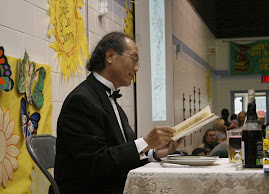How often have we heard of the heart of teaching?
Similar to all players in any arena of human endeavour, teaching falls into three categories: 1) as a job; 2) as a profession; and 3) as a personal response to a calling.
As a job, teaching is good.
A teacher is a paid well, and the working day is relatively short, about five-and-half to six hours per day, never mind the school year is only 200 days.
Having said that, if viewed and experienced as a job, teaching is a hard job indeed. A teacher has to daily plan and perform, contend with non-compliant and misbehaving students, belligerent parents, some over-zealous colleagues, and top-down curriculum expectations that translate into performance indicators by hard-nosed administrators.
Boy! Is it worth it? Give me a break!
As a profession, teaching takes on a noble tone, a respectable appearance, an academic and scholarly discourse, a learned pursuit, and, perhaps, an opportunity to make a difference.
However, as a profession, formal policies and procedures (developed to safeguard the welfare of those who serve in it in the first place) may ultimately reduce teaching to become an exercise in maintaining the status quo, as Neil Postman of Columbia University once put it, “Teaching as a Conservative Activity”.
What are you saying, Tom? I shall explain by way of the following observations.
When teaching is viewed and experienced as a personal response to a calling (that’s where the word “vocation” comes from), a teacher sees more clearly what the calling is all about. A teacher begins to serve in myriad ways to meet the needs of the learners, be they learning needs, social-emotional needs, or physical needs.
The key is service—the rolling up one’s sleeves to do whatsoever that needs to be done to help the learner meet needs.
To do “whatsoever” is HUGE!
It translates into working longer than five-and-half hours a day, offering help at preparation periods and lunch breaks (often in abandoned defiance of collective agreement guidelines), taking a sick child home, celebrating a child's successes, touching the inner heart and spirit of the students and their families, and perhaps, spending a few days more than 200 in a year to prepare for an awesome, exciting, and potentially life-changing-and-transcending growth experience for the students placed in our care.
That’s the heart of teaching. It goes way beyond the art of teaching. It steps outside the bureaucratic box labeled "teacher welfare" to facilitate learning, growth, and love in stu
 dents for their welfare.
dents for their welfare.Ultimately, teaching is not at all about me, the teacher.
It’s all about them!
The key ingredient of leadership in any worthwhile human enterprise is altruistic service to others, not self; and educational leadership should reflect no less.
And, I am humbled and honoured to have this precious opportunity to serve in making this world a better place, one student at a time.
The blessing of being able to do so is all mine!





2 comments:
What is in a calling? I believe it is found in the heart that you so eloquently describe in your post. What would this world look like if we all obeyed the callings of our hearts rather than our heads? Might we find a real happiness & joy that seems to elude so many of us these days? Here's to heart!
Your brother in Christ, Jerry.
I am glad you went on to say that teachers put in more time than their 5.5 day. I don't know any teacher whether it be just a a job or sense of calling that puts in those kinds of hours.
Post a Comment